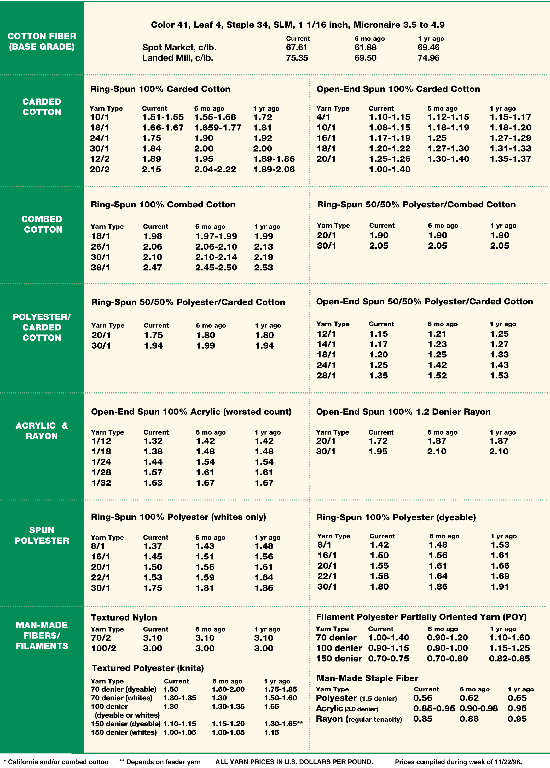B
uoyed by a 7-percent increase in export deliveries in 1997, German textile machinery
makers are optimistic that overall results for 1998 will prove similarly satisfactory. VDMA, the
German machinery association, says that this growth comes even after a slowdown in the first
quarter of this year.
They consider that ITMA in Paris in June could hardly be timed better, since it would allow
manufacturers to take advantage of a revival in Asian manufacturing. Even if the crisis continued
throughout the year, ITMA could at least mitigate the worst effects, according to VDMA.
Despite all the obstacles, including a high-cost manufacturing base, problems in Asia and
industry disruptions in various areas and individual countries, Germany consistently manages to
maintain its position as the world’s leading producer of textile machinery. Equipment valued at
nearly $5 billion was shipped worldwide in 1998.
At a little more than $2 billion, deliveries to Europe were about the same as last year. The
figure of just at $1.4 billion for Asia was 4-percent more. North America again was a star
performer with exports rising by nearly 26 percent. Shipments to Latin America showed the biggest
gains, rising nearly 54 percent.
Turkey, the single most important market for German textile machinery, showed signs of
cutting back somewhat on investment, in line with a slower pace of expansion that has continued
this year. Despite a 15-percent decline in shipments, Turkey managed to maintain its number-one
spot, although the gap with the United States at number two has narrowed. The next four positions
in the export league are held by Italy, China, Taiwan and Brazil. Mexico, previously 12th, rose to
seventh place. India takes the eighth spot.
Somewhat surprisingly, knitting and hosiery machines, finishing machines, and parts and
accessories form the bulk of German textile machinery and equipment exports, with spinning machines
at 27 percent and weaving machines at 14 percent. However, weaving machines showed a 17-percent
increase; hosiery/knitting machines 16 percent; parts/accessories 12 percent; and textile finishing
machines 7 percent.
Report Charts International Labor Costs And Hours Worked
The latest figures of comparative labor costs in the spinning and weaving industries continue to
illustrate the enormous disparities between the highest paid workers ($24.08 per hour in
Switzerland) and the lowest (24 cents per hour in Indonesia).
Despite the continuing application of robotics, automation and increased lifestyle
expectancies, such differences will continue to play a major role in the economics of textile
production for a good while yet. These extremes are spelled out in an annual survey of labor costs
by Werner International.
Within the European Union, the cheapest labor is in Portugal, with earnings averaging an
hourly $4.51, while one of the most expensive is in Denmark at $23.00. Workers in the United
Kingdom earn an average $13.58 an hour for a yearly workload of 5,210 hours.
In the NAFTA region, Mexico’s hourly rate of $2.33 is dwarfed by U.S. costs of $12.97, and
those in Canada of $13.93. Surprisingly, however, Mexican mills operate fewer hours than U.S. and
Canadian counterparts, with 6,267 hours annually. The United States operates at an average of 8,250
hours and Canada 7,997.
Costs in Asia and the Pacific are low, with the exception of Australia ($11.39) and Japan
($20.70). South Korean cost is $3.63, and mills operate 8,304 hours a year. Hong Kong and Taiwan
show costs of $5.65 and $5.85 respectively, with similar operating times for their mills.
CEMATEX And JTMA Reach Agreement For Expos In Asia
In order to avoid a head-on clash with CEMATEX’s ITMA Asia event in Singapore, OTEMAS will be
held October 8-13, 2001 in Osaka, Japan, instead of October 17-23. ITMA Asia retains its October
15-19 slot.
While OTEMAS, hosted by the Japan Textile Machinery Association (JTMA), is an established
event, started in 1976, ITMA Asia is a new venture, which, according to CEMATEX is designed to
limit the proliferation of textile exhibitions globally.
It would seem, however, that on this occasion, the Japanese are sticking to their guns and
that ITMA Asia will mean an additional show in the area in 2001. Evidently, JTMA spurned a CEMATEX
offer to participate in Singapore as a partner to the eight European components of CEMATEX.
JTMA said it would continue to support OTEMAS and would recommend its members to exhibit at
the Osaka show. Despite Asia’s economic difficulties, JTMA says the region’s main textile
industries remain vibrant and on a solid growth track.
January 1999





